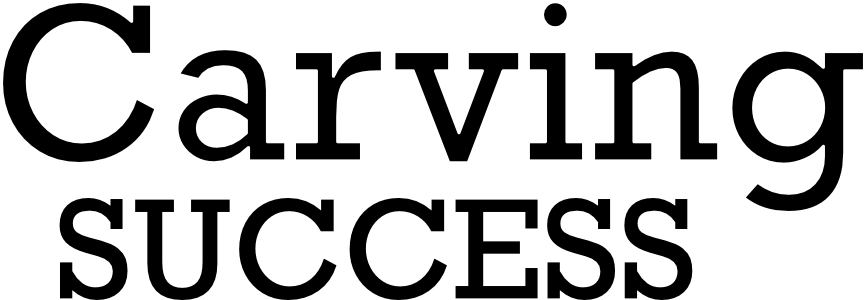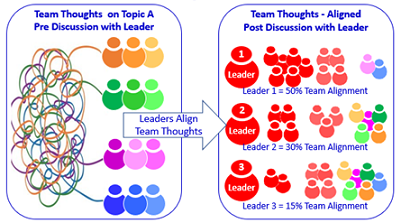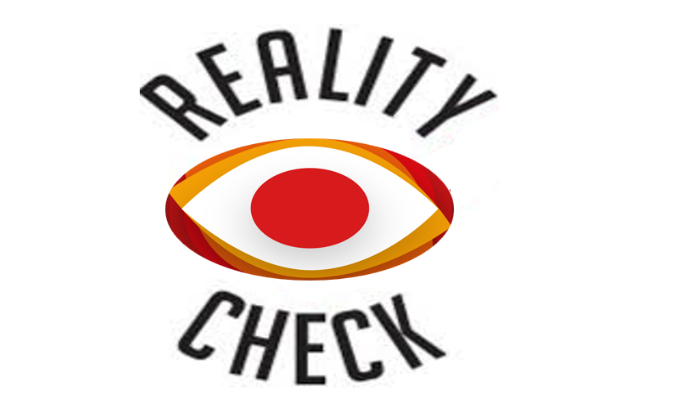Digital media aids thought multiplicity, thereby increasing the number of people who look at and understand things differently
My earlier article “Successful Leaders Manage Distributed and Diverse Thinkers Better” was found to be a heavy read. This is an attempt to convey a simplified version of the message.
This article highlights new challenges that leaders are facing due to the high connectivity and information availability, made possible by technology and digital media, among the people they lead.
Team members are exposed to different information nuggets leading to a multiplicity of ways in which they look and understand things. These executives are referred to as “distributed thinkers” in the article
This situation increases the challenge for leaders to align team members to a common way of seeing things. This implies that the rationale required to align distributed thinkers is becoming more difficult than before. This is because conversion to bring alignment is now from a wider range of diverse views.
The chances of getting ‘distributed thinkers’ aligned would always be limited. This very often forces the leaders to manage their teams with fewer aligned members. This would mean that executives would have to work with lower levels of “Commitment and Trust” to achieve goals.
Successful leaders have recognized this challenge and have adopted strategies to deal with this “mindset change” that is required to manage teams. They learn to live with member alignment deficits.
Commitment Deficit
When leaders work with commitment deficit teams, the movement towards goals is not as good as it could be. All members do not put their “shoulder behind the wheel” or start contributing with full energy and determination.
Case 1: A newly set up German manufacturing company in India received a large export order. The German managing director felt it was impossible to meet the deadlines based on the advice of the “Industrial Engineering Department” capacity calculations. The estimate at best was that the company could reach 75% of the required targets within the timeframe.
The VP (Production) was called in for a discussion. He asked for and was given time to discuss it with the shop floor foremen and workers. In a day he returned and accepted the challenge. Observing the commitment and spirit of the shop floor the MD committed an incentive and achievement bonus.
The shop floor team worked out a plan that ensured everyone had their eyes on the ball at all times. To do this they: worked out overlapping shifts which helped to reduce the time taken for lunch and bio breaks, besides other initiatives like; staggered their lunch breaks to keep the machines running 24/7; working on two machines at a time; modifying the speeds and feeds of the machines to deliver optimal output levels; reducing the tool changing and machine setting time and most of all by staying focused.
They met the target and had time to spare. This was a happy ending that showed the Germans what a spirited and committed Indian workforce could do. On reviewing the criteria for achieving success, the VP found that though the incentive and bonus were motivating influences, the key achievement factors (KAF) were: the shop floor was kept fully aligned through teams, that informally acted as aggregators and integrators to ensure minimal communication and coordination gaps, which in turn reduced normally accepted time lags to a minimum. It was also accepted that though many lessons could be learned from the experience, this way of functioning could not be expected to become standard practice.
Trust Deficit
Trust is the social glue that keeps relationships together. Team members who trust each other spend less time and energy being cautious or protecting themselves, which ultimately results in higher achievement. While there is much discussion on critical factors in building trust, the most important point to note is that it takes several interactions over a while between people and parties, to reach a level of trust. Trust-building is not an automatic phenomenon – it takes time and commitment. When there are transfers, promotions, or recruits in teams, the dynamics change, and trust has to be built bottom-up.
Case 2: The board of a company that wanted to expand its operations across the world promoted its CEO (Priya) to the position of Executive Chairman. Priya has had an exemplary track record for the past 10 years. The newly selected CEO (Jack) who replaced her was from within the company and was well qualified for the job. Priya’s new job as Chairman was to develop strategies for global growth and Jack’s was to run day-to-day operations.
In the new scenario, many of the old VPs who had built a trust equation with Priya, could not understand why Jack was questioning them so much on proposals they put up. This caused much strain within the team. At the same time, when they approached Priya with whom they had a good working relationship, they did not make much headway. Priya however, felt she could not interfere as she had to build a trust relationship with Jack.
Priya being open and broadminded took a different approach to resolve the issue. She had several frank discussions with Jack who also was a mature manager with years of experience. They appreciated each other’s problems and handled the VPs cautiously and tactfully to reduce the strain. They explained to the VPs the need to question each other to understand backgrounds and to know where their thoughts were coming from. Though this would take time, it would build a strong foundation for future working relationships. In addition to this, both Priya and Jack hired a change management consultant to facilitate the process.
Despite all these efforts, it took a year to get back to normal functioning levels where relationships were built and a common frame of understanding was achieved. Expecting and managing “Trust deficit” situations in teams is becoming more important by the day with the increase in the number of distributed thinkers. Leaders need to bring all entities in the team on a common platform of understanding to facilitate higher levels of trust.
Ideas on Managing ‘Distributed Thinker’ Challenges
Managing distributed thinkers is a challenge of the present and successful leaders have accepted and adapted their management styles to meet this new challenge. Three common strategies used are:
1. Maintain a high level of communication: across all levels – vertical, horizontal, and across silos; build formal and informal channels to know and understand not only what team members are saying, but also to ascertain where they are coming from.
2. Build a sounding board of experienced mentors to bounce ideas off and validate inputs.
3. Build your network of “Sponsors and Champions” and nurture them. Sponsors provide you support and inputs from the top. Champions spread your thoughts to the team below and provide inputs on their mindsets.
Most of the points shared above are being done informally and intuitively. However, it may be a good idea to review how well you are doing this, to ensure minimum surprises and achieve maximum alignment.
Alan


